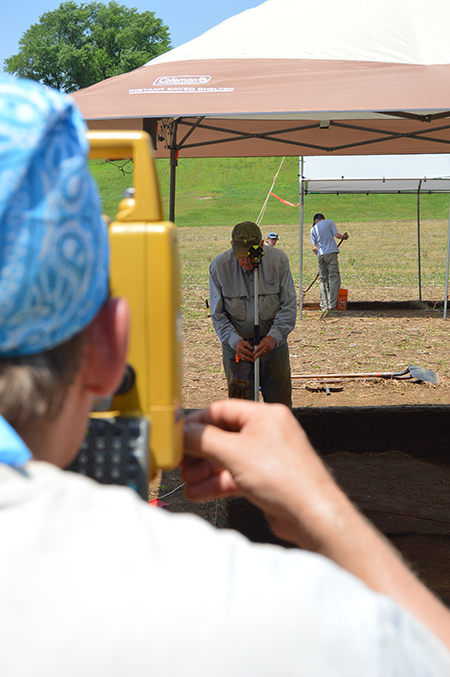The MHT Archaeological Synthesis Project was launched in 2007 by the Maryland Historical
Trust Board of Trustees (with additional funding provided by the MD State Highway
Administration) to begin the process of synthesizing data from the thousands of
excavation projects that have been conducted in Maryland over the past few decades.
It consists of a searchable database that is linked to our Maryland Archaeological Site
Survey files, but is also tied to synopsis reports and cover sheets generated by
reviewing each larger excavation project. The synopsis reports contain a capsule summary
of the overall site report, organized in a way that makes it easier for researchers to
quickly pull out the most relevant information they would need for reconstructing the past activities
at a site. The cover sheets deal more with the history of archaeological activity at a site: specifically
the justifications for fieldwork, research objectives, and the potential for future research at the locale.
For questions about the Archaeological Synthesis Project or to make research inquiries,
please contact Stephanie Soder at (410) 697-9552.
Use and Access
 Archaeologists and volunteers work to record the locations of artifacts at Billingsley site.
Archaeologists and volunteers work to record the locations of artifacts at Billingsley site.
Use of the Archaeological Synthesis Database is available in two forms: a Public Access
version and a Professional Access version. Geographic locations and site setting
information within the Public Access version of the database are intentionally vague
to protect site locations. Latitude and Longitude data is only accurate to within 1 square
mile of each site. This option is suitable unless you are a professional
archaeologist. The Professional Access version of the database includes detailed site
location information and is only available to authorized archaeologists, agency
representatives, and other researchers who meet the Secretary of
the Interior's Professional Qualification Standards and who currently
have a Medusa Account. Search functionality and the universe of sites
within the database are identical in both versions.
» Search the Archaeological Synthesis Database
» Learn more about the MHT Archaeological Synthesis
Project